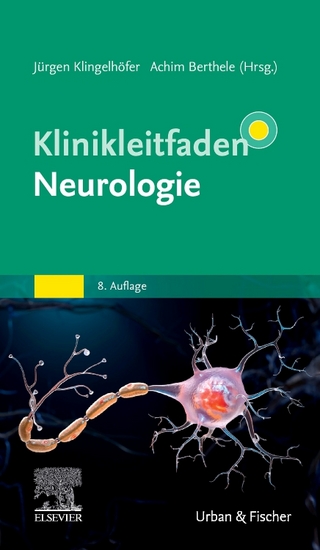
Neurorehabilitation Technology
Springer International Publishing (Verlag)
978-3-319-28601-3 (ISBN)
Neurorehabilitation Technology, Second Edition is a valuable resource for neurologists, biomedical engineers, roboticists, rehabilitation specialists, physiotherapists, occupational therapists and those training in these fields.
David J. ReinkensmeyerDavid Reinkensmeyer is Professor in the Departments of Mechanical and Aerospace Engineering, Anatomy and Neurobiology, Biomedical Engineering, and Physical Medicine and Rehabilitation at the University of California Irvine. His research interests are in neuromuscular control, motor learning, robotics, and rehabilitation. A major goal of his research is to develop physically interacting, robotic and mechatronic devices to help the nervous system recover the ability to control movement of the arm, hand, and leg after neurologic injuries such as stroke and spinal cord injury. He is also investigating the computational mechanisms of human motor learning in order to provide a rational basis for designing movement training devices. He is Editor-in-Chief of the Journal of Neuroengineering and Rehabilitation. His laboratory has helped develop a variety of robotic devices for manipulating and measuring movement in humans and rodents, including two devices that have been successfully commercialized as Flint Rehabilitation’s MusicGlove and as Hocoma’s ArmeoSpring.Volker DietzVolker Dietz, neurologist, is Professor emeritus and former Director of Spinal Cord Injury Center and Chair of Paraplegiology, University of Zürich, Balgrist Hospital, Switzerland. His research is focused on neuroplasticity, neurorehabilitation technology and regeneration. He retired in 2009, having worked at the University of Zürich since 1992. Presently he is Senior Research Professor at the University Hospital Balgrist. Previously he had an educational grant at the National Institute for Neurology, Queen Square, London. Afterwards he held a position at the University of Freiburg and was guest professor at the Miami project to cure paralysis. He has been on the editorial board of the several journals of neurology and neurosciences. He has been awarded various honors and awards including the Schellenberg Prize for outstanding research in paraplegia in 2012.
lt;p>Introduction: Rationale for Machine Use.- Part I Basic Framework: Motor Recovery, Learning, and Neural Impairment.- Learning in the Damaged Brain/Spinal Cord: Neuroplasticity.- Movement Neuroscience Foundations of Neurorehabilitation.- Designing Robots That Challenge to Optimize Motor Learning.- Multisystem Neurorehabilitation in Rodents with Spinal Cord Injury.- Sensory-Motor Interactions and Error Augmentation.- Normal and Impaired Cooperative Hand Movements: Role of Neural Coupling.- Clinical Assessment and Rehabilitation of the Upper Limb Following Cervical Spinal Cord Injury.- Part II Human-Machine Interaction in Rehabilitation Practice.- Application Issues for Robotics.- The Human in the Loop.- Robotic and wearable sensor technologies for measurements/clinical assessments.- Clinical Aspects for the Application of Robotics in Neurorehabilitation.- Clinical Application of Robotics and Technology in Restoration of Walking.- Standards and Safety Aspects for Medical Devices in the Field of Neurorehabilitation.- Clinical Application of Rehabilitation Technologies in Children and Youths Undergoing Neurorehabilitation.- Part III Robots for Upper Extremity Recovery.- Restoration of Hand Function in Stroke and Spinal Cord Injury.- Forging Mens et Manus: the MIT Experience in Upper Extremity Robotic Therapy.- Three-Dimensional Multi-Degree-of-Freedom Arm Therapy Robot (ARMin).- Implementation of Impairment Based Neuro-Rehabilitation Devices and Technologies following Brain Injury.- Part IV Robotics for Locomotion Recovery.- Technology of the Robotic Gait Orthosis Lokomat.- Beyond Human or Robot Administered Treadmill Training.- Toward Flexible Assistance for Locomotor Training: Design and Clinical Testing of a Cable-Driven Robot for Stroke, Spinal Cord Injury, and Cerebral Palsy.- Robot-Aided Gait Training with LOPES.- Robotic Devices for Overground Gait and Balance Training.- Using Robotic Exoskeletons for Overground Locomotor Training.- Functional Electrical Stimulation Therapy: Recovery of Function Following Spinal Cord Injury and Stroke.- Passive Devices for Upper Limb Training.- Upper-Extremity Therapy with Spring Orthoses.- Virtual Reality for Sensorimotor Rehabilitation Post-Stroke: Design Principles and Evidence.- Wearable Sensors for Rehabilitation.- BCI-based Neuroprostheses and Physiotherapies for Stroke Motor Rehabilitation.- Epilogue: What Lies Ahead?
"This well written and comprehensive book reviews fundamental principles and practical applications of technology used in neurorehabilitation. ... This book can be used by engineers, scientists, and rehabilitation clinicians who are interested in obtaining an in-depth understanding of various forms of rehabilitation technology. ... It also represents a step above the first edition, and would be a unique and useful contribution to a rehabilitation library." (Elliot J. Roth, Doody's Book Reviews, April, 2017)
| Erscheinungsdatum | 08.10.2016 |
|---|---|
| Zusatzinfo | XXII, 647 p. 117 illus., 88 illus. in color. |
| Verlagsort | Cham |
| Sprache | englisch |
| Original-Titel | Neurorehabilitation Technology |
| Maße | 178 x 254 mm |
| Themenwelt | Medizin / Pharmazie ► Medizinische Fachgebiete ► Neurologie |
| Schlagworte | biomedical engineering • Functional Electrical Stimulation • Locomotion • Medicine • Neurology • Neurorehabilitation • Neurorehabilitation technology • physiotherapy • Posture • Rehabilitation Medicine • rehabilitation psychology • Robotics • spinal cord • Virtual Reality • wearable sensor |
| ISBN-10 | 3-319-28601-3 / 3319286013 |
| ISBN-13 | 978-3-319-28601-3 / 9783319286013 |
| Zustand | Neuware |
| Informationen gemäß Produktsicherheitsverordnung (GPSR) | |
| Haben Sie eine Frage zum Produkt? |
aus dem Bereich



